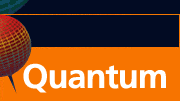CONTACTS
- Coordinator
Sebastian Deffner
-
Quantum Lunch Location:
T-Division Conference Room, TA-3,
Building 123, Room 121
 |


Quantum Institute: Visitor Schedule
The Quantum Lunch is regularly held on Thursdays in the Theoretical Division Conference Room, TA-3, Building 123, Room 121.
The organizing committee includes Malcolm Boshier (P-21), Diego Dalvit (T-4), Michael Di Rosa (C-PCS), Sebastian Deffner (T-4 & CNLS), Changhyun Ryu (P-21) , Nikolai Sinitsyn (T-4), Rolando Somma (T-4), Christopher Ticknor (T-1), and Wojciech Zurek (T-4).
For more information, or to nominate a speaker, contact Sebastian Deffner.
To add your name to the Quantum Lunch email list, contact Ellie Vigil.
Thursday April 16, 2015
12:30 PM - 2:00 PM
Speaker: Riccardo Messina (Laboratoire Charles Coulomb, Université de Montpellier )
Technical Host: Diego Dalvit
TOPIC: Momentum and energy transfer out of thermal equilibrium: three-body and nanostructuring effects
Abstract
A striking consequence of quantum electrodynamics is the existence of an electromagnetic force between any couple of neutral polarizable bodies even in the vacuum state of the electromagnetic field. This effect, known as Casimir effect, was first theoretically predicted in 1948. In 2005 it was shown that the absence of thermal equilibrium deeply modifies this effect, producing quantitative and qualitative differences, such as the appearance of new asymptotic behaviors and the possibility of a repulsive force. The out-of-equilibrium scenario brings to the attention a different closely related effect, the radiative heat transfer.
The first part of my talk addresses the combination of the absence of thermal equilibrium with three-body interactions. To this aim I discuss a recently developed general theory describing Casimir force and radiative heat transfer in a system consisting of three arbitrary bodies held at three independent temperatures and immersed in a thermal environment. As an application, I consider the force acting on an atom inside a planar cavity. I show that, differently from the equilibrium configuration, the absence of thermal equilibrium admits one or more positions of minima for the atomic potential, paving the way to a possible trapping scheme for Rydberg atoms.
In the second part of my talk I discuss the out-of-equilibrium Casimir interaction between two different one-dimensional dielectric lamellar gratings, calculated the Fourier modal method. The behavior of the pressure is characterized in detail as a function of the three temperatures of the system as well as the geometrical parameters of the two gratings, showing that the interplay between non-equilibrium effects and geometrical periodicity offers a rich scenario for the manipulation of the force. A repulsive pressure can be obtained, whose features can be tuned by controlling the degrees of freedom of the system. Remarkably, the transition distance between attraction and repulsion can be decreased with respect to the case of two slabs, implying an experimental interest for the observation of repulsion.
|


